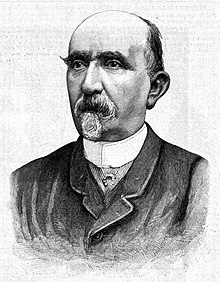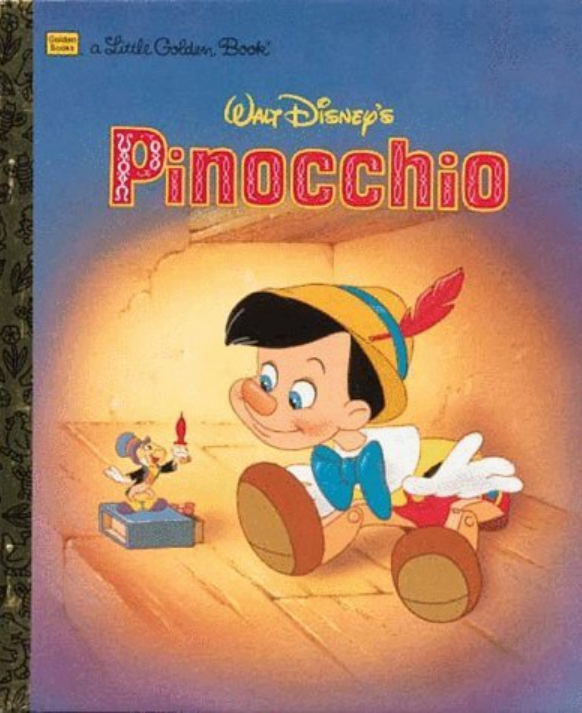Is Pinocchio Really A Children’s Story? The question might not seem so serious, as “The Adventures of Pinocchio,” often categorized children’s tale, transcends age boundaries with rich themes and lessons. While the story captivates young readers with its whimsical elements and youthful protagonist, it also resonates with adults through its exploration of moral values and societal critique.
But is that all? There certainly is more to it than meets the eye, so grab a hold of your curiosity and start reading, here we will discuss about at length just what this Fiction story Pinocchio offers us.
The narrative serves as a moral compass, cautioning about the perils of disobedience and dishonesty and emphasizing virtues such as attentiveness and studiousness. Furthermore, it delves into the psychological exploration of its main character, Pinocchio, offering a critique of violence and consumerism. Thus, it is a timeless tale, offering a rewarding reading experience for all ages.
The Genesis of Pinocchio: A Detailed Perspective
In a quaint Tuscan village, a wooden puppet named Pinocchio was crafted by a woodcarver named Geppetto. Unlike any other, this puppet harbored a dream of transforming into a real boy.

A Tuscan Beginning: In a small village in Tuscany, a woodcarver named Geppetto stumbles upon a unique piece of wood. This wood, perfect for his craft, is the beginning of a creation that would become a classic character in children’s literature.
The Birth of a Puppet: As Geppetto starts to carve, he is taken aback when the puppet exhibits human-like characteristics. It can laugh, cry, and even speak like a child. This extraordinary puppet is christened as Pinocchio.
An Animated Puppet: Pinocchio is no ordinary puppet. Crafted from a unique piece of wood, he can move independently. From the moment of his creation, Pinocchio displays a playful and mischievous side, even going as far as to steal Geppetto’s wig.
A Dream of Transformation: Despite his initial unruly behavior, Pinocchio harbors a dream. He yearns to become a real boy. This aspiration sets him on a path filled with adventures and transformations, each teaching him valuable life lessons.
The Legacy of Pinocchio: First published in 1881 by Carlo Collodi, the story of Pinocchio has since become a beloved children’s tale worldwide. Its unique protagonist and moral teachings continue to captivate audiences, making it a timeless piece of literature.
Shedding Light On Pinocchio’s Unique Features
As a marionette, Pinocchio was a puppet controlled by strings. His most distinctive feature was his nose, which had a peculiar characteristic – it grew longer with each lie he told.
The Tale-Telling Nose: Perhaps the most iconic feature of Pinocchio is his elongated nose. This isn’t merely a physical characteristic but a moral compass of sorts. His nose grows as lies Each time, the more Pinocchio lies, the longer it grows as a consequence. This serves as a visual cue of the repercussions of dishonesty.
The Self-Operating Marionette: Pinocchio is a marionette, a puppet controlled by strings. Unlike traditional tools manipulated directly by the puppeteer’s hand, Pinocchio can move autonomously. This is due to the enchanted wood from which he was carved, granting him the ability to move freely.
The Metamorphosis: Another unique trait of Pinocchio is his ability to transform. Throughout his journey, he experiences several changes – from promising The Fairy with Turquoise Hair to becoming a real boy to turning into a donkey and then reverting to a puppet. Each transformation brings him closer to his dream of becoming a real boy.
The Playful Persona: Pinocchio is notorious for his playful and mischievous nature. He often finds himself in the wrong company and tends to lie. His nose grows longer with each lie, leading him into various predicaments. His misbehavior serves as a cautionary tale rather than being portrayed as charming.
These distinctive traits make Pinocchio a compelling character in children’s literature. His journey is a moral guide, teaching valuable lessons about honesty and personal growth.
Pinocchio’s Traits and Adventures Explained Simply
Pinocchio was often swayed by bad influences and tended to lie, frequently leading to troublesome situations. A series of transformations mark his journey. He pledges to The Fairy with Turquoise Hair to become a real boy, escapes with Candlewick to the Land of Toys, turns into a donkey, joins a circus, and reverts to the puppet.
In the final chapter, after escaping from The Terrible Dogfish with Geppetto, Pinocchio’s dream comes true as he transforms into a real boy.
The Playful Puppet: Pinocchio, the central figure of Carlo Collodi’s timeless children’s novel, is renowned for his playful nature. From his inception, he exhibits a spirited demeanor, mocking his creator and even pilfering Geppetto’s wig. His antics, rather than being endearing, serve as a cautionary tale.
The Truth-Telling Nose: Pinocchio’s most notable attribute is his nose, which elongates each time he fabricates a lie. This unique trait is more than just a physical feature; it’s a moral barometer. It acts as a visual indicator of the repercussions of dishonesty.
The Path of Transformations: Throughout the narrative, Pinocchio experiences a series of transformations, each signifying a crucial milestone in his quest to become a real boy. He pledges to The Fairy with Turquoise Hair to transform into a real boy, absconds with Candlewick to the Land of Toys, metamorphoses into a donkey, joins a circus, and reverts to his original puppet form. Each transformation brings him closer to realizing his dream of becoming a real boy.
The Ultimate Transformation: In the novel’s final chapter, Pinocchio and Geppetto escape from The Terrible Dogfish’s belly. At this juncture, thanks to the intervention of the Fairy in a dream Pinocchio finally sheds his puppet form and transforms into a real boy.
This ultimate transformation signifies the culmination of Pinocchio’s journey and the realization of his dream.
The Moral of the Story: Pinocchio’s adventures impart valuable lessons about honesty, courage, and kindness. His narrative serves as a moral guide for readers, emphasizing the importance of these virtues. His journey, fraught with challenges and obstacles, ultimately leads him to evolve into a better individual.
Interpretations and Adaptations Of Pinocchio
The tale of Pinocchio has been retold in various forms, including the renowned 1940 Disney film. A recent addition to these adaptations is a live-action version of Pinocchio that debuted on Disney+ in September 2023.
The Original Story:
“The Adventures of Pinocchio,” penned by Italian writer Carlo Collodi, first graced the pages of an Italian children’s magazine in serial form in 1881 and was later published as a standalone book in 1883. This original narrative is the foundation for the 1940 Disney film, although the book presents a darker and more humorous tale.
Cinematic Renditions Of Pinocchio
Pinocchio’s story has been reimagined in numerous cinematic adaptations, each offering a unique spin on the classic tale. Some of the most notable ones include:
- Disney’s Pinocchio (1940): Arguably the most well-known rendition of Pinocchio’s tale, this version presents a more light-hearted and family-oriented narrative than the original novel.
- Guillermo del Toro’s Pinocchio (2023): This adaptation clinched the Best Animated Feature award at the 95th Academy Awards Ceremony, solidifying its place among the best Pinocchio films ever made. Del Toro made Oscar history by winning Best Picture, Director, and Animated Feature.
- Disney’s Pinocchio (2022): Helmed by Robert Zemeckis, this film was intended to be a live-action remake of Disney’s 1940 classic. However, it was criticized for its lack of originality and creativity.
- Pinocchio (2015): This film stands out as one of the first renditions of the story that blends live-action with CGI animation. It features a gender-swapped version of the cricket named Coco.
Other Renditions Also Include
Beyond films, Pinocchio’s tale has been adapted into various other literary forms. The original text has been reimagined into storybooks, young adult novels, stage performances, and more. These adaptations have evolved over the years, influenced by societal, political, and educational factors.
Consistent Elements in Characterization Of Pinocchio
While interpretations of Pinocchio’s character may vary, certain elements remain consistent:
- Pinocchio is portrayed as a sentient puppet.
- Geppetto is always his creator.
- Pinocchio’s nose grows when he lies.
- The Self-Moving Marionette:
A constant element in all renditions of Pinocchio’s tale is his existence as an animated, sentient puppet. Unlike traditional puppets manipulated by the puppeteer’s hand, Pinocchio, a marionette, exhibits independent movement. This autonomy stems from the enchanted wood from which he was crafted, bestowing him the ability to move freely.
The Artisan: Geppetto:
Geppetto, Pinocchio’s creator, is another character trait that remains consistent across all adaptations. In every version, Geppetto is depicted as a woodcarver residing in a Tuscan village who brings Pinocchio to life. Despite Pinocchio’s playful antics, Geppetto harbors a deep affection for him and is often concerned about his welfare.
The Truth-Revealing Nose:
Pinocchio’s growing nose is his most iconic feature. In every adaptation, Pinocchio’s nose elongates each time he tells a lie. This serves as a visual symbol of the repercussions of dishonesty, making it a unique characteristic that distinguishes Pinocchio from other characters in children’s literature.
The Playful Persona:
Pinocchio is notorious for his playful nature. He often finds himself in the company of mischief-makers and tends to lie. His nose grows longer with each lie, leading him into various predicaments. His misbehavior serves as a cautionary tale rather than being portrayed as charming.
These consistent character traits have made Pinocchio one of children’s literature’s most recognizable and cherished characters.
In Reality Is Pinocchio Really A Children’s Story
While “The Adventures of Pinocchio” is often classified as a children’s tale due to its whimsical elements and the youthfulness of its main character, it also encompasses themes and lessons that resonate with adults.
The narrative serves as a moral guide, cautioning about the perils of disregarding parental advice, underscoring the importance of obedience and truthfulness, and emphasizing the value of being virtuous, attentive, and intellectual. It also illustrates how a young child learns from life’s trials and errors.
Furthermore, the book delves into the psychological exploration of Pinocchio in an attempt to rediscover a lost humanity amidst the void of technology and science. The myth of Pinocchio is employed to critique the culture of violence and consumerism.
So, while the story can captivate children with its adventurous and magical aspects, the profundity of its themes and the intricacy of its character development can offer a rewarding reading experience for adults. Thus, it can be argued that “The Adventures of Pinocchio” is a timeless tale for readers of all ages.
What Was The Original Pinocchio Story Like? Is Pinocchio Really A Children’s Story
Carlo Collodi‘s original “The Adventures of Pinocchio,” while cherished as a children’s narrative, harbors several grim and unsettling elements that are often glossed over.

From the onset, Pinocchio is portrayed as a mischievous and troublesome character. His first act upon coming to life is to laugh scornfully in Geppetto’s face, followed by stealing his wig and running away. This behavior, far from being endearing, serves as a stern warning.
In Collodi’s initial version, the story was meant to conclude with Pinocchio’s execution. After ignoring advice from the Talking Cricket, Pinocchio is ambushed by the Fox and the Cat, who attempt to rob him of his gold coins. They then proceed to hang him from a tree, leaving him to suffocate. This grim conclusion was intended to impart a harsh lesson about the severe consequences of disobedience and dishonesty.
However, due to the serialized nature of the story and the readers’ demand for more, Collodi decided to extend the narrative. Throughout his adventures, Pinocchio encounters various characters and faces numerous challenges. He meets a lame fox and a blind cat, who trick him into burying his gold coins in a field, promising him it would grow into 2000 gold coins. He also has a run-in with a puppet master who wants to use him as firewood.
One of the most shocking parts of the original story is Pinocchio’s interaction with the Talking Cricket. Unlike the Disney version, where the cricket is a friendly guide, Pinocchio kills the cricket with a hammer when he tries to give him advice in the original story.
Despite his misadventures and poor decisions, Pinocchio eventually learns the importance of being good, listening, and studying. After promising the Fairy with Turquoise Hair to become a real boy, Pinocchio undergoes a series of transformations and trials before finally becoming a human boy.
The original story of Pinocchio is much darker and more complex than the Disney adaptation. It serves as a moral tale warning children about the consequences of wrong behavior and the importance of listening to their parents. It’s a fascinating exploration of the journey from mischief to redemption.
Darkest Aspects of Pinocchio Original Story Detailed
Carlo Collodi’s original “The Adventures of Pinocchio” is a far cry from the more sanitized Disney adaptation. Here are some of the darker elements present in the original narrative:
- Jiminy Cricket’s Demise: Unlike the friendly guide in the Disney version, Pinocchio, irritated by Jiminy Cricket’s advice, ends his life with a hammer in the original story.
- Pinocchio’s Unruly Behavior: Pinocchio’s mischievous antics in the original tale are far from endearing. He is depicted as a “rascal,” “imp,” “scapegrace,” “disgrace,” “ragamuffin,” and “confirmed rogue. “
- Pinocchio’s Grim Fate: The original narrative was intended to be a tragedy, concluding with Pinocchio’s execution. His adversaries, the Fox, and the Cat, hang him from an oak tree.
- Dire Poverty: The original story vividly portrays the extreme poverty that Geppetto and Pinocchio endure. When Geppetto is imprisoned, Pinocchio is forced to beg for food on the streets.
- Physical Metamorphosis: Due to shunning education, Pinocchio transforms into a donkey and is subsequently cast into the sea.
- Brushes with Death: Pinocchio narrowly escapes death multiple times, including nearly being used as firewood for a puppeteer’s meal and almost being fried by a fisherman.
These elements underscore the harsh realities of life and the repercussions of one’s actions, offering a stark contrast to the more sanitized versions prevalent today. It’s a compelling illustration of how narratives can evolve and be adapted over time to cater to different audiences and societal norms.
A Few Words For Wrapping Up
“The Adventures of Pinocchio” is a timeless narrative that continues to enchant audiences with its unique protagonist and moral teachings. The story of Pinocchio, whether through the original novel or its various adaptations, remains an integral part of children’s literature. The original and sanitized version has its own teachings and different meanings.

